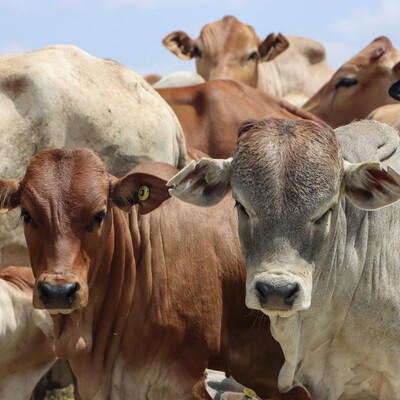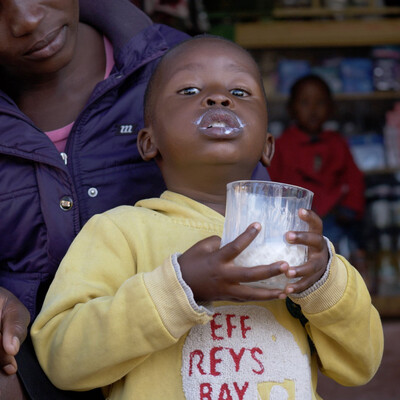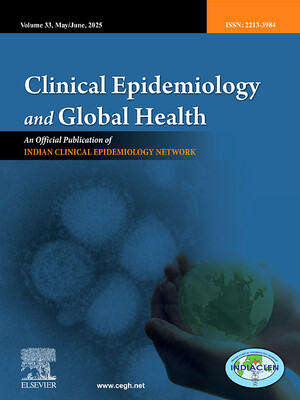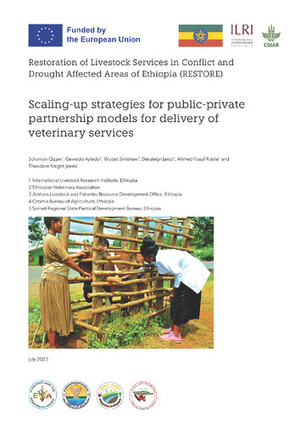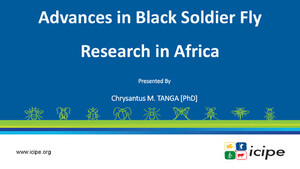
Reducing the impact of infectious diseases on village poultry production in Ethiopia
Poultry play an important economic, nutritional and socio-cultural role in the livelihoods of poor rural households in many developing countries, including Ethiopia, where scavenging poultry are an integrated part of the smallholder production systems and play a significant role in poverty alleviation.
Chickens have a high socio-economic value and are important to those (often landless) people who do not own cattle, sheep, or goats. Poultry production is particularly important to women, who often own and manage the chickens and control cash from sales. The resulting income is often used to support education of children.
Developing countries have many indigenous chicken varieties which are well adapted to local environments as they are excellent foragers, better able to avoid predator attacks and demonstrate better immunity to common diseases. However, due to relatively low genetic potential and poor levels of husbandry, most of these indigenous chicken breeds grow slowly and are poor producers of small sized eggs. Furthermore, infectious diseases have a major impact and prevent even this limited genetic potential from being realised. Breeding programmes using local chicken ecotypes suggest rapid improvement in productivity is possible. However, these programmes are yet to select for resistance to infectious disease.
Enhanced genetic resistance through selective breeding represents an under-exploited low cost opportunity for disease control in low input poultry production systems. The aim of this project is to develop a poultry breeding programme to improve resistance to priority infectious diseases whilst enhancing productivity and production. Realisation of this objective requires three further overlapping objectives: (i) investigation of the genetic resistance of local poultry varieties; (ii) identification of the diseases with the greatest burden to village poultry; and, (iii) investigation of the wider social and economic impact of infectious diseases and of factors affecting uptake of control strategies.
Investigation of resistance in local Ethiopian poultry will not only identify genetic regions and genes that can be used to inform cross breeding programmes in Ethiopia, but will also greatly extend our knowledge of the genetics of resistance in poultry, which to date has largely been studied in inbred and commercial poultry lines.
Our study identifying the important diseases of village poultry in Ethiopia will be the first to simultaneously examine the impact of a large number of pathogens and will begin to explore how these agents act in concert to cause the diseases seen by farmers. We will also explore the cause of the major epidemics seen each year resulting in death of many birds. Together, this knowledge will enable more precise disease control planning by Ethiopian policy makers and animal health professionals, as well as inform targeting of the breeding programme.
Village poultry production is undertaken by poor rural farmers with little or no input. This means that all output (eggs, meat, offspring) represent a net gain to the farmer, but also limits the potential for even low cost disease control interventions. Furthermore, poultry production is deeply imbedded in Ethiopian society and the characteristics of birds are important to the farmers. We will work with farmers to identify diseases impacting production and productivity of their birds, factors affecting uptake of control strategies (including indigenous controls) and the desirable characteristics of birds.
We will utilise the results of these studies to inform selection in an ongoing breeding program which is improving the productivity of local poultry ecotypes for distribution to villages. Thus we will ensure that the improved birds also have enhanced resistance to key infectious diseases.
The project will also provide a legacy of improved capacity within Ethiopia, including training of local scientists and enhanced laboratory facilities.
Objectives
The aim of this project is to investigate genetic variability in the resistance of local chicken ecotypes to major infectious diseases impacting on productivity of village poultry in Ethiopia in order to inform development of strategies for improvement of genetic resistance and productivity, whilst accounting for social factors and economic constraints.
The key objectives of this project are highly integrated, and are here listed in order of priority. (Note; Obj. 4 represents the key aim of the program, but full realisation of this requires completion of Objs 1 to 3):
1. Define the prevalence and distribution of genetic markers of resistance within and between well-defined local poultry ecotypes and between local ecotypes and commercial lines;
We will use two complementary approaches (genome-wide association studies using large numbers of SNPs, and polymorphism studies at candidate resistance genes) to identify the genetic components of indigenous village poultry resistance/susceptibility to disease challenges and will subsequently apply the findings in breeding improvements programmes for productivity.
2. Assess the social and economic factors underpinning village poultry production, particularly the impact of infectious diseases and identification of impediments to development of acceptable disease control programmes (including selective breeding)
Participatory research methods and in-depth questionnaires will be used to evaluate opinions of village poultry keepers regarding the diseases affecting their poultry, identify those of greatest importance to village poultry productivity, investigate the social and economic context of village poultry production and consider factors that would impede and facilitate disease control programmes. Such information is likely to be vital to the success of measures aimed at development of control interventions, and may be different for different actors (for example, between cultural groups, or between men and women). The outcomes of this study will directly inform the development of strategies for enhanced resistance and productivity.
3. Identify and prioritise infectious diseases of village poultry that impact on production and productivity and hence livelihood
Laboratory analyses of samples collected during a multistage repeat cross-sectional study will be used to investigate infection burden for multiple major infectious diseases of village poultry. The outcomes of this study will be used to target our approach toward identification of genetic resistance to the most prevalent or important diseases in order to inform the breeding programme to improve poultry productivity and production whilst maintaining or enhancing genetic resistance.
4. Develop strategies for enhancing genetic resistance against priority diseases of poultry for incorporation into programmes for improved poultry production and productivity whilst recognising social, cultural and economic factors
Incorporation of information relating to genetic resistance of local poultry ecotypes to priority diseases into an on-going poultry improvement programme at EIAR will facilitate the development of strains with improved productivity and production parameters that have maintained or improved disease resistance, compared to parent stock. Distribution of such birds will improve income from low-input poultry production by the rural poor
5. Develop capacity and inform policy for control of priority avian infectious diseases in East Africa.
We will utilise opportunities within the project to develop human and material capacity within the participating organisations and in Ethiopia more generally. We will utilise existing, and develop new, links with key policy makers in order to provide direct input to these stakeholders.
Technical Summary
Poultry play an important role in the livelihood of poor rural households in many developing countries. However, infectious diseases have major impact on productivity. Selective breeding for enhanced genetic resistance represents an under-exploited low cost opportunity for disease control. The aim of this project is to develop a poultry breeding program to improve resistance to priority infectious diseases whilst enhancing productivity. Realisation of this objective requires three further overlapping objectives:
1) We will use genome-wide association studies using large numbers of SNPs and polymorphism studies at candidate resistance genes to identify the genetic components of indigenous poultry resistance/susceptibility to disease challenge. Investigation of resistance in local Ethiopian poultry will not only identify genetic regions and genes that can be used to inform cross-breeding programmes in Ethiopia, but will also greatly extend our knowledge of the genetics of resistance in poultry, which to date has largely been studied in inbred and commercial poultry lines.
2) We will identify and prioritise infectious diseases that impact on village poultry. We will use ELISA for diagnosis, in Ethiopia, of key viral and bacterial pathogens and use coprological examination to diagnose gut parasites. This knowledge will enable more precise disease control planning by Ethiopian policy makers and animal health professionals, as well as inform targeting of the breeding programme.
3) Using participatory methods we will work with farmers to identify diseases impacting poultry production, factors affecting uptake of control strategies and the desirable characteristics of birds.
We will utilise all these results to inform selection in an ongoing breeding program which is improving the productivity of local poultry ecotypes for distribution to villages. Thus we should ensure that the improved birds also have enhanced resistance to key infectious diseases.
Academic Beneficiaries
The proposal will have a range of benefits for scientists both in the UK and worldwide, especially within Africa. The most obvious and straightforward outcome of this research is a definitive study of the prevalence of major poultry pathogens within two distinct and different geographical and climate areas. For the first time the prevalence of co-infection with a wide range of important pathogens will be determined. This survey will provide valuable data for epidemiological studies both locally, throughout Africa and through collaboration. The data will also assist those scientists with a role in informing animal health and disease control policy. The socio-economic branch of the proposal is particularly novel within the context of poultry production and will also provide data for use by further studies in this area.
Of course the major part of the project involves the investigation of the genetics of chickens from the two study areas. This will provide a major resource to animal geneticists, evolutionary biologists and those concerned with infectious disease control. Current genetic studies of the chicken are largely limited to well-defined inbred experimental lines, commercial breeds and the whole genome sequence derived from a Red Jungle Fowl. This proposal will provide a genetic resource from two poultry ecotypes that have likely descended from a common source, relatively recently. Given the diversity of their environment and potential exposure to different pathogens, they represent an excellent resource for evolutionary biology studies both between the ecotypes and with commercial poultry breeds and the Red Jungle Fowl. The data on polymorphisms associated with disease resistance will benefit ongoing studies in both Europe and the USA on development of resistant lines and breeds for commercial applications. There may also be direct impact on understanding the impact of variation in immune function as a consequence of these studies.
Importantly, we will also make available biological samples (blood and DNA) collected within the scope of the project. More particularly, it is expected that duplicate blood samples will be deposit in the ILRI livestock biodiversity biobank, hosted at ILRI-Nairobi and currently including more than 20,000 livestock samples. This will be linked to the Domestic Animal Genetic Resources Information System (DAGRIS; http://dagris.ilri.cgiar.org) linking livestock productivity, diversity (breeds, molecular), agro-ecosystem, environmental and socio-economic parameter information. Duplicates of extracted DNA will also be stored within the Frozen Ark project facilities (http://www.frozenark.org) at the University of Nottingham. This will ensure that UK and non-UK based scientists have access to the samples for further studies.
Perhaps a less obvious benefit are the human and material capacities built into the proposal. We will provide training to two new researchers in the field, bringing new ideas and enthusiasm. A legacy of laboratories equipped and skilled in surveillance of infectious diseases that can play a key role in underpinning further studies in East Africa be provided. Through the collaborations already built by this proposal, UK and local scientists can forge networks both in Africa, the UK and the wider community that will lead to future research in genetics, socio-economic studies and infectious disease control, potentially extending the research within the proposal into wider areas influencing animal and public health.
Impact Summary
Poultry play a vital role in the livelihood of poor rural households in developing countries and are particularly important to those (often landless) people who do not other livestock and to women, who often own and manage the chickens and control cash from sales. Income from poultry production is often used to support education of children. However, low genetic potential and poor levels of husbandry mean that most indigenous breeds grow slowly and are poor producers of small eggs. Furthermore, infectious diseases prevent even this limited genetic potential from being realised, with villagers citing disease as the major limitation to production. In addition to endemic disease, outbreaks occur annually and may kill entire flocks. Ethiopian farmers often sell their flocks in anticipation of, or in the face of, such epidemics, only to later buy them back at a loss. Hence, poorly defined endemic and epidemic diseases are major impediments to productivity and impact markedly on livelihoods.
This project will address these issues on several fronts in order to enable distribution of improved local poultry ecotypes with enhanced productivity and production traits as well as improved genetic resistance to important infectious diseases. Newcastle Disease has a worldwide distribution and is of enormous economic impact; Fowl Typhoid and Fowl Cholera remain important diseases of developing poultry systems, whilst coccidiosis, Marek’s Disease and IBDV also remain important in developed poultry industries. Further, many ecto- and haemoparasites exploit their hosts without provoking overt disease, yet co-infection with these agents may increase susceptibility to other diseases. Improvements in the control of these infectious diseases and of productivity of village poultry will improve the livelihoods of farmers and increase food security in Ethiopia and throughout Sub-Saharan Africa and Southern Asia. Genetic resistance to major pathogens may also have direct application to developed countries; e.g. parasitic and bacterial infections in free-range and organic poultry production are an increasing challenge and resistant breeds of poultry may provide the key to disease control.
The availability of genetic information from Ethiopian poultry has considerable academic impact as a resource for study of animal genetics and evolutionary biology in particular and will be a resource available to other scientists through the Domestic Animal Genetic Resources Information System at ILRI and the Frozen Ark project at University of Nottingham.
To our knowledge this is the first survey simultaneously assessing the frequency of exposure to many major pathogens and investigating the cause of major outbreaks. This will enable targeting of genetic improvement and development of strategies for disease control that utilise improved birds but also incorporate other control strategies (including technology-based strategies, such as vaccination). The role of co-infection on disease susceptibility and prevalence has been little studied in a low input production setting. This multi-pathogen approach has the potential for substantial impact in terms of knowledge and in application to disease control strategies.
The socio-economic surveys enable a targeted approach to genetic improvement (based on factors important to the local communities) and to development of strategies for disease control that utilise improved birds but also recognise other (indigenous) control strategies. Crucially, this ensures that developed strategies are socially acceptable. The human and material capacity built into the proposal will have considerable impact. Two doctorate-trained researchers (plus technicians) and a laboratory equipped and skilled in diagnosis of infectious disease will play a key role in underpinning studies and disease surveillance. Through the international collaboration already built by this proposal, UK and local scientists can forge networks in Africa, the UK and the wider community that will lead to future research in genetics and infectious disease control, and in wider areas influencing animal and public health policy and strategy.






